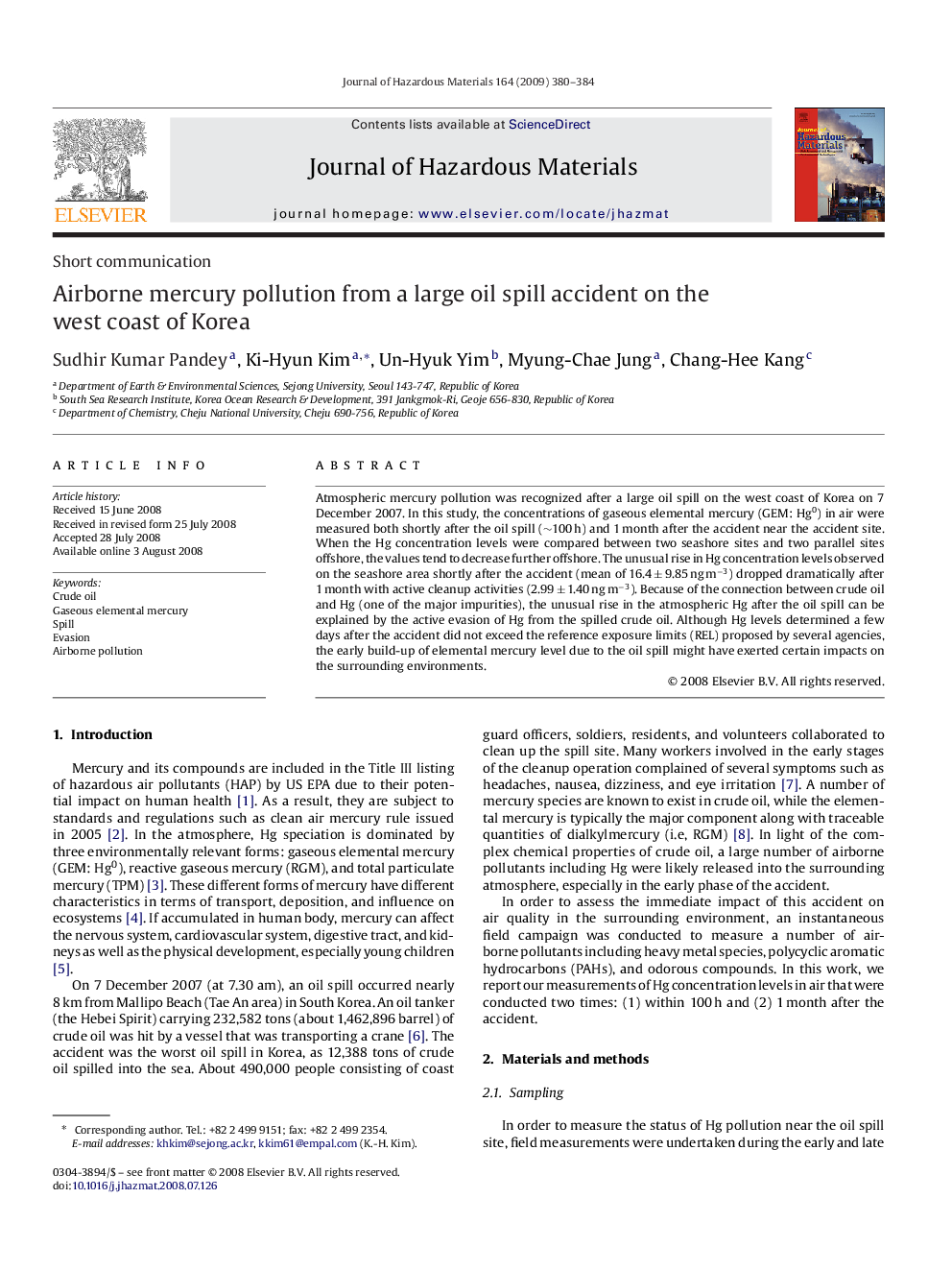| Article ID | Journal | Published Year | Pages | File Type |
|---|---|---|---|---|
| 582234 | Journal of Hazardous Materials | 2009 | 5 Pages |
Abstract
Atmospheric mercury pollution was recognized after a large oil spill on the west coast of Korea on 7 December 2007. In this study, the concentrations of gaseous elemental mercury (GEM: Hg0) in air were measured both shortly after the oil spill (â¼100 h) and 1 month after the accident near the accident site. When the Hg concentration levels were compared between two seashore sites and two parallel sites offshore, the values tend to decrease further offshore. The unusual rise in Hg concentration levels observed on the seashore area shortly after the accident (mean of 16.4 ± 9.85 ng mâ3) dropped dramatically after 1 month with active cleanup activities (2.99 ± 1.40 ng mâ3). Because of the connection between crude oil and Hg (one of the major impurities), the unusual rise in the atmospheric Hg after the oil spill can be explained by the active evasion of Hg from the spilled crude oil. Although Hg levels determined a few days after the accident did not exceed the reference exposure limits (REL) proposed by several agencies, the early build-up of elemental mercury level due to the oil spill might have exerted certain impacts on the surrounding environments.
Related Topics
Physical Sciences and Engineering
Chemical Engineering
Chemical Health and Safety
Authors
Sudhir Kumar Pandey, Ki-Hyun Kim, Un-Hyuk Yim, Myung-Chae Jung, Chang-Hee Kang,
